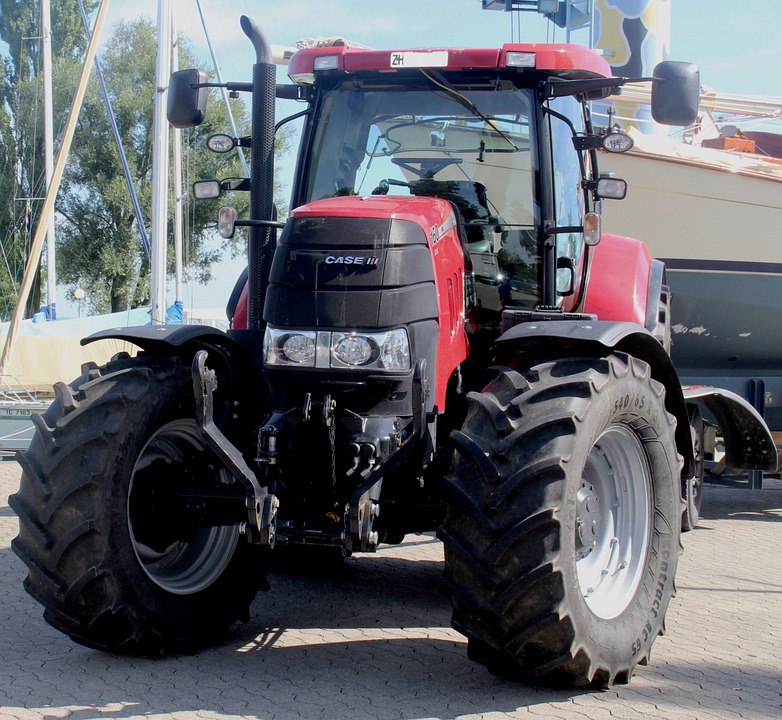How the Microchip Shortage Impacts the Agricultural Industry


When Benjamin Holt and Charles Dinsmoor invented the first tractor, I’m sure they never expected their machine to eventually need a microchip. Yet, here we are more than a century later, waiting for more microchips to be produced.
Nearly every piece of new farm equipment these days needs a microchip to operate -- combines, tillage tools, planters, tractors, and much more. Therefore, when COVID-19 hit, toilet paper and hand sanitizer weren’t the only things farmers were worried about. The shortage of microchips caused a pressing issue within the agricultural and food industries.
WHAT IS A MICROCHIP?
In 1907, many electronic devices relied on a three-electrode vacuum tube to operate. However, many realized that the vacuum tubes were bulky, expensive, and fragile. In the 1930s, American scientists believed they could create a device with the same technology that was cheaper, more reliable, and less wasteful.
It was in 1947 that the scientists at Bell Laboratories created a transistor. This device operated similarly to a vacuum tube, but had none of it’s disadvantages. Transistors were a great alternative, until many companies found that they were delicate and easy to break. Finally in 1958, U.S engineers Jack Kilby and Robert Noyce created the microchip.
The microchip has each of the features vacuum tubes and transistors have, while also being small, efficient, and reliable. Microchips, also known as semiconductors, are responsible for controlling the electric current of a machine. They are found in a wide variety of devices -- phones, cars,and dishwashers. Semiconductors only cost around 14 cents; however, they have caused a significant financial impact for many businesses.
HOW DID THE CHIP SHORTAGE HAPPEN?
The answer is known as the bullwhip effect. Picture this -- a cowboy is cracking a bullwhip. When he slightly moves his hand, several ripples are created in the whip. The ripples continue to get larger as they move down the whip, until it finally cracks.
In this case, customers (the cowboy) created small ripples in the supply chain (the whip) when COVID-19 started. As most Americans began to work from their homes and live in a “virtual world”, the demand for electronic devices increased. Many devices that were used over this period of time required microchips.
Additionally, due to COVID, the companies in the semiconductor industry reduced their production or shut down -- causing supply to decrease. Both of these factors caused the supply chain to come to a devastating “crack”.
IMPACT ON THE AGRICULTURAL INDUSTRY
Farm equipment manufacturers like New Holland, John Deere, and Kubota have halted a bit as they patiently wait for their next shipment of microchips. This issue in the supply chain is forcing farmers to plan ahead. Most farmers are expecting the microchip issue to continue into 2022, which means purchasing new equipment will be challenging and expensive.
So how are farm equipment dealers holding up? Recently I spoke with Terry Greenleaf, President of Ag Industrial Inc., a 4-store New Holland dealership in the northeast US. Terry explained how the chip shortage is impacting various areas within his business:
“We have equipment not shipping due to the lack of electronic components. There are a lot of shortages in the field right now because of the delayed inventory replenishment.”
Similar to Greenleaf’s situation, agribusinesses across the U.S are struggling to get inventory for their stores. Currently, most dealers claim that replenishment dates are unknown or incorrect.
As you can see, the seemingly simple shortage of microchips is causing a massive domino effect at every level of the agricultural industry -- starting with large electronic manufacturers, and trickling down to U.S. farmers and ranchers.
THE SOLUTION
As the chip shortage continues to impact various industries, the federal government has gotten involved. United States Senators Chuck Schumer and Todd Young sponsor The United States Innovation and Competition Act of 2021 (formerly known as the Endless Frontier Act). This legislation is expected to cost around $200 billion, and many claim it will help solve this shortage.
While we patiently wait for legislation to be passed, supply is expected to replenish by 2022. Many claim that over the next 8-10 months, the situation will moderately improve. However, there is no guarantee as to when inventory will turn to some form of normalcy.
WHAT IF I NEED A TRACTOR BEFORE 2022?
When you need a new piece of farm equipment, it’s hard to wait. However, with equipment production at an all-time low, buying new may not be an option. Until 2022 (or later) farmers have a few options: buy quality used farm equipment, repair the equipment you already have (need parts? Click here.)
-Buy quality used farm equipment
-Rent equipment
-Repair your machine (need parts?)
-Hire custom harvesting crews
STAY TUNED
We will be updating our page with more information on the microchip shortage. Make sure to come back to keep up with the latest!
What are your thoughts on this topic? Comment below!
